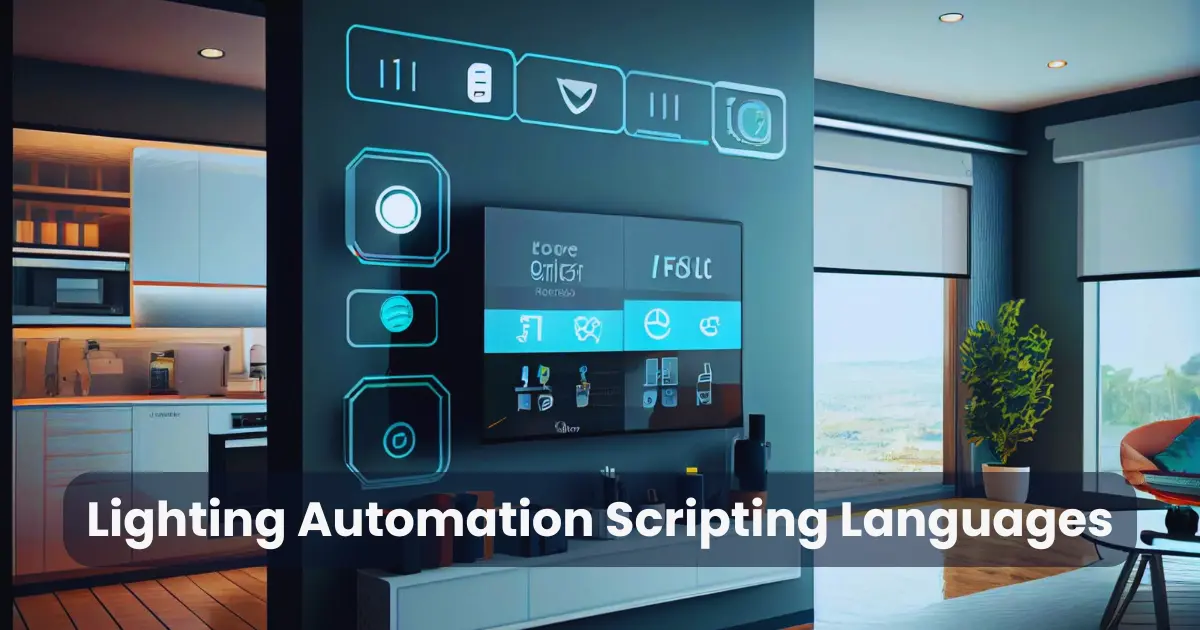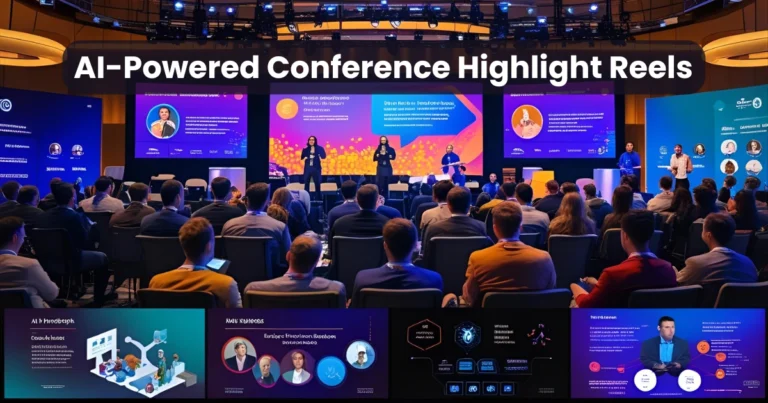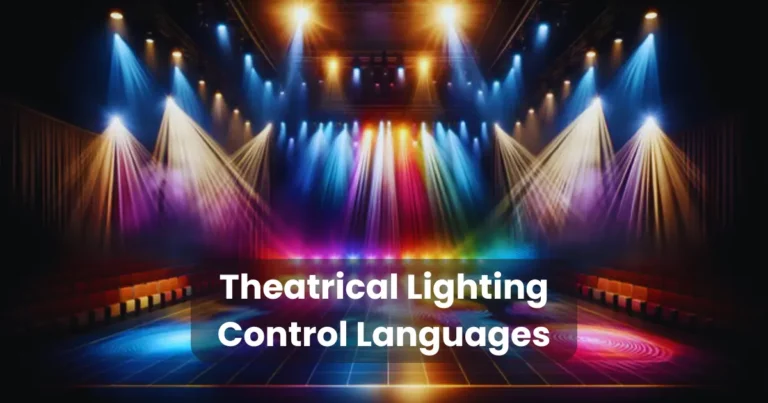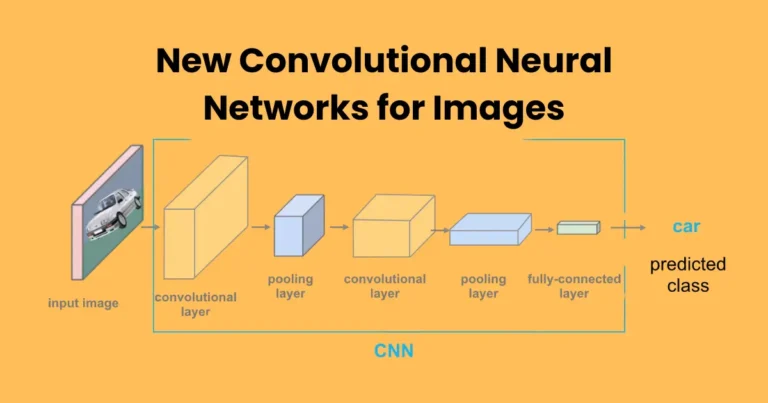Lighting Automation Scripting Languages: A Comprehensive Guide

Contents
- 1 Popular Lighting Automation Scripting Languages
- 2 Key Features of Lighting Automation Scripting Languages
- 3 How Lighting Automation Scripting Languages Improve Efficiency
- 4 Best Practices for Writing Lighting Automation Scripts
- 5 Future Trends in Lighting Automation Scripting Languages
- 5.1 1. AI and Machine Learning Integration
- 5.2 2. Increased Use of IoT-Based Scripting
- 5.3 3. Cloud-Based and Remote Control Scripting
- 5.4 4. Enhanced Energy Efficiency and Sustainability
- 5.5 5. Cross-Platform and Multi-Language Compatibility
- 5.6 6. Augmented Reality (AR) and Virtual Reality (VR) Integration
- 5.7 7. Open-Source and Community-Driven Development
- 5.8 Conclusion
Lighting automation scripting languages are essential for designing, controlling, and optimizing smart lighting systems. These languages enable users to automate lighting operations, adjust brightness levels, schedule on/off cycles, and integrate with smart home or industrial automation systems. As technology advances, the demand for efficient lighting automation scripting languages continues to grow, making it easier to create customized lighting solutions for homes, offices, and large-scale infrastructures.
Automation in lighting systems enhances energy efficiency, reduces manual intervention, and improves user convenience. By leveraging scripting languages, developers and engineers can create dynamic lighting behaviors, integrate sensors, and ensure seamless communication with IoT devices. In this article, we will explore various lighting automation scripting languages, their features, benefits, and how they contribute to smarter and more efficient lighting systems.
Popular Lighting Automation Scripting Languages
Several programming and scripting languages play a key role in lighting automation. Each offers unique benefits, depending on system requirements, ease of integration, and performance capabilities. Below are some of the most commonly used lighting automation scripting languages:

1. Python for Lighting Automation
Python is one of the most popular scripting languages for lighting automation. Due to its simplicity and extensive library support, it is widely used in home automation platforms like Home Assistant and OpenHAB. Python allows users to write scripts for controlling lighting schedules, adjusting brightness, and integrating with sensors. Additionally, frameworks like PySerial and MQTT make it easier to communicate with smart lighting systems.
2. JavaScript in Smart Lighting Systems
JavaScript plays a significant role in web-based and IoT-driven lighting automation. With frameworks like Node.js, JavaScript enables real-time communication between lighting systems and cloud-based automation platforms. Many smart lighting hubs support JavaScript-based scripting, allowing users to develop interactive dashboards and voice-controlled lighting functions.
3. Lua for Embedded Lighting Controls
Lua is a lightweight and efficient scripting language commonly embedded in lighting control systems. Many lighting automation controllers, such as Philips Hue Bridge, support Lua scripting for defining complex automation rules. Its fast execution speed and minimal memory footprint make it ideal for embedded applications and real-time lighting adjustments.
4. C++ for High-Performance Automation
C++ is widely used in high-performance lighting automation systems where low latency and real-time processing are required. Many industrial and commercial lighting control systems are programmed using C++ due to its ability to handle large-scale operations efficiently. It is commonly used in DMX lighting control systems, which are essential for stage lighting and architectural illumination.
Each of these lighting automation scripting languages offers distinct advantages depending on the project requirements. Choosing the right language ensures efficient automation, seamless integration, and enhanced user experience.
Key Features of Lighting Automation Scripting Languages
Lighting automation scripting languages provide the foundation for intelligent and dynamic lighting control. These languages enable automation, customization, and integration with various smart home and commercial systems. Below are the key features that make lighting automation scripting languages essential for modern lighting control.

1. Ease of Use and Learning Curve
A good scripting language for lighting automation should be easy to learn and implement. Languages like Python and Lua offer simple syntax, making them accessible for beginners and experienced developers alike. JavaScript is also widely used due to its compatibility with web-based lighting control interfaces.
2. Integration with IoT and Smart Devices
Lighting automation scripting languages must support Internet of Things (IoT) integration. Many modern lighting systems, such as Philips Hue, Lutron, and Zigbee-based solutions, rely on APIs that allow scripting languages to send and receive commands. Python and JavaScript (Node.js) excel in this area due to their vast ecosystem of libraries and IoT protocols like MQTT, Zigbee, and Z-Wave.
3. Flexibility and Customization
A major advantage of using scripting languages is the ability to customize lighting behavior. Scripts can be written to adjust brightness based on ambient light, trigger color changes in response to music, or activate specific lighting modes based on time schedules. Lua and Python are often preferred for their ability to create complex automation rules with minimal code.
4. Performance and Execution Speed
For real-time lighting automation, execution speed is a critical factor. While Python and JavaScript are user-friendly, languages like C++ are preferred in high-performance environments such as DMX lighting control for concerts and theater productions. Lua is also widely used in embedded lighting systems due to its lightweight execution.
5. Remote Control and Cloud Connectivity
Modern lighting automation systems often require remote control via smartphones or cloud services. Scripting languages like JavaScript (Node.js) enable seamless cloud connectivity, allowing users to control their lighting setups from anywhere. Python-based automation platforms such as Home Assistant also support cloud-based triggers for smart lighting adjustments.
6. Cross-Platform Compatibility
A good lighting automation scripting language must be compatible with multiple operating systems, including Windows, Linux, and embedded systems. Python and JavaScript are highly portable, while C++ is commonly used in hardware-level lighting control. This cross-platform capability ensures that scripts can be deployed on different lighting control hardware without significant modifications.
7. Security and Reliability
Since lighting automation often involves network connectivity, security is a crucial feature. Encrypted communication protocols, authentication mechanisms, and secure API access are essential for preventing unauthorized control. Python and JavaScript provide strong security features, ensuring safe execution in home and commercial automation environments.
The effectiveness of a lighting automation scripting language depends on its ease of use, integration capabilities, flexibility, performance, and security. Whether for smart homes, commercial buildings, or theatrical lighting, selecting the right scripting language ensures efficient automation and seamless user experiences.
How Lighting Automation Scripting Languages Improve Efficiency
Lighting automation scripting languages play a crucial role in enhancing efficiency by enabling smart control, energy savings, and seamless integration with various systems. Through automation, these languages help reduce manual intervention, optimize power consumption, and provide scalable solutions for different environments. Below are the key ways in which lighting automation scripting languages improve efficiency.

1. Remote Control and Smart Scheduling
One of the most significant advantages of using lighting automation scripting languages is the ability to remotely control lighting systems. With scripts written in Python, JavaScript, or Lua, users can schedule lights to turn on or off at specific times, reducing unnecessary energy usage.
- Example: A script in Python can automatically dim office lights at 6 PM and turn them off at 8 PM, ensuring energy conservation after working hours.
- JavaScript (Node.js) can integrate with smart home hubs to control lighting remotely via a mobile app or voice assistant.
By scheduling lights based on occupancy or natural daylight levels, businesses and homeowners can minimize electricity waste and lower costs.
2. Energy Efficiency Through Automation
Lighting automation scripting languages optimize energy usage by adjusting brightness, color temperature, and power settings based on real-time conditions. Smart sensors combined with scripting allow dynamic control of lighting systems.
- Example: A Lua script can work with motion sensors to turn lights off in unoccupied rooms, reducing energy consumption.
- C++ scripting in industrial automation systems ensures lighting is used efficiently in warehouses or production facilities based on demand.
By leveraging smart automation, businesses can achieve substantial energy savings, making lighting control systems more sustainable.
3. Customization for Different Lighting Scenarios
Lighting automation scripting languages provide flexibility in creating custom lighting scenarios based on user preferences and environmental factors.
- Example: A Python script can adjust the color temperature of lights throughout the day—cool white in the morning for focus and warm white in the evening for relaxation.
- JavaScript-based automation can integrate with smart assistants like Amazon Alexa or Google Home, allowing users to activate preset lighting scenes with voice commands.
This level of customization enhances user experience and ensures optimal lighting conditions for different activities, such as reading, working, or entertaining guests.
4. Scalability in Large Installations
For commercial and industrial applications, scalability is essential. Lighting automation scripting languages allow easy expansion of automation systems without significant hardware changes.
- Example: C++ is often used in large-scale lighting control systems where multiple devices need synchronized operation.
- Python scripts can integrate with IoT platforms, allowing centralized control of hundreds of smart lights across different locations.
This scalability ensures that lighting automation systems remain efficient and future-proof as requirements grow.
Lighting automation scripting languages significantly enhance efficiency by enabling smart control, reducing energy consumption, and providing scalable solutions. Whether for homes, offices, or large-scale commercial installations, scripting ensures that lighting systems operate intelligently, cost-effectively, and sustainably.
Best Practices for Writing Lighting Automation Scripts
Creating efficient and reliable lighting automation scripts requires following best practices to ensure optimal performance, security, and ease of maintenance. Whether scripting for smart homes, commercial buildings, or industrial lighting, developers must consider factors such as code efficiency, integration, and system scalability. Below are the best practices for writing lighting automation scripts.

1. Use Modular and Reusable Code
When writing lighting automation scripts, structuring the code into modular functions improves maintainability and reusability. Instead of writing repetitive code, use functions and classes to handle common tasks like adjusting brightness, scheduling lights, or responding to sensor data.
Best Practice:
- Create separate functions for tasks like turning lights on/off, adjusting brightness, or changing colors.
2. Optimize for Performance
Lighting automation scripts should execute quickly to avoid delays in lighting responses. This is especially important for real-time applications, such as motion-activated lighting or stage lighting setups.
Best Practice:
- Avoid unnecessary loops and large delays in scripts.
- Use event-driven programming instead of continuously polling devices.
- For large lighting networks, implement asynchronous processing (e.g., asyncio in Python).
Using asynchronous execution ensures quick response times and efficient resource usage.
3. Ensure Compatibility with Smart Home Protocols
Lighting automation systems often rely on IoT protocols such as MQTT, Zigbee, Z-Wave, and REST APIs. Scripts should be written to seamlessly integrate with these communication standards.
Best Practice:
- Use MQTT for real-time lighting updates.
- Implement Zigbee or Z-Wave APIs for smart home compatibility.
- Utilize RESTful APIs for cloud-based lighting control.
By supporting multiple protocols, scripts can interact with various smart lighting brands and hubs.
4. Implement Error Handling and Logging
Proper error handling prevents script failures and ensures smooth automation. Logging helps track system performance and detect issues.
Best Practice:
- Use try-except blocks to catch errors.
- Implement logging to record script execution.
- Send alerts (via email or notifications) if an automation failure occurs.
Proactive monitoring improves system reliability and reduces downtime.
5. Prioritize Security in Automation Scripts
Since lighting automation often involves network-connected devices, security is a major concern. Unauthorized access can lead to privacy risks and system manipulation.
Best Practice:
- Use encrypted communication for MQTT and API requests.
- Implement authentication for cloud-based control.
- Avoid hardcoding sensitive credentials in scripts.
- Regularly update scripts to patch security vulnerabilities.
By securing scripts, unauthorized access is prevented, and system integrity is maintained.
6. Optimize for Scalability
Lighting automation scripts should be designed to scale from a single room to an entire building without significant rewrites.
Best Practice:
- Use configurable parameters to handle multiple lights/zones.
- Implement database storage for automation rules.
- Leverage cloud-based control for large-scale automation.
7. Regularly Test and Debug Scripts
To ensure reliability, lighting automation scripts should be tested before deployment. Debugging helps eliminate unexpected behavior.
Best Practice:
- Use sandbox environments before live implementation.
- Utilize simulation tools for debugging automation logic.
- Perform real-world testing under different conditions (e.g., day/night modes).
By following these best practices, lighting automation scripts can be efficient, secure, and scalable. Whether using Python, JavaScript, Lua, or C++, proper structuring, performance optimization, and security considerations lead to reliable and future-proof automation.
Future Trends in Lighting Automation Scripting Languages
The field of lighting automation scripting languages is evolving rapidly, driven by advancements in AI, IoT, energy efficiency, and smart technology integration. As lighting systems become more sophisticated, scripting languages must adapt to offer greater flexibility, scalability, and automation capabilities. Below are the key trends shaping the future of lighting automation scripting languages.

1. AI and Machine Learning Integration
One of the biggest trends in lighting automation is the integration of Artificial Intelligence (AI) and Machine Learning (ML). Future scripting languages will enable lighting systems to learn from user behavior, occupancy patterns, and environmental conditions to provide adaptive lighting solutions.
Future Developments:
- AI-driven scripts will analyze real-time data and adjust lighting conditions dynamically.
- Machine learning models will predict lighting needs based on past usage patterns.
- AI-based automation will reduce manual configurations, improving energy efficiency.
Example: A Python script using AI could detect patterns in daily lighting usage and suggest optimized schedules for maximum energy savings.
2. Increased Use of IoT-Based Scripting
The future of lighting automation scripting languages will be deeply connected to Internet of Things (IoT) platforms. More scripts will be written to communicate with smart hubs, cloud services, and real-time sensors.
Future Developments:
- Edge computing will allow real-time lighting decisions without relying on cloud services.
- IoT scripts will use MQTT, CoAP, and WebSockets for instant communication between devices.
- 5G connectivity will enhance the responsiveness of IoT-based lighting control.
Example: A JavaScript (Node.js) script using MQTT will allow real-time light adjustments based on data from a motion sensor.
3. Cloud-Based and Remote Control Scripting
With the rise of smart homes and industrial automation, scripting languages will support cloud-based automation to enable remote control of lighting systems.
Future Developments:
- Cloud platforms like AWS IoT, Google Cloud IoT, and Azure IoT Hub will support lighting automation.
- Voice-controlled assistants (Alexa, Google Assistant) will integrate more efficiently with lighting scripts.
- Remote scripts will allow users to manage lighting from anywhere in the world.
Example: A Python script that integrates with a cloud API to control lights remotely.
4. Enhanced Energy Efficiency and Sustainability
As global energy regulations become stricter, lighting automation scripting will focus more on energy efficiency and sustainability.
Future Developments:
- AI-powered energy monitoring will optimize lighting usage.
- Self-adjusting scripts will reduce energy waste by dynamically modifying brightness based on occupancy and daylight levels.
- Integration with renewable energy sources (solar, wind) will be more common.
5. Cross-Platform and Multi-Language Compatibility
Future lighting automation scripting languages will need to be more interoperable, allowing developers to mix Python, JavaScript, Lua, and C++ in a single system.
Future Developments:
- APIs will allow cross-language integration for greater flexibility.
- Standardized scripting frameworks (e.g., Matter, Zigbee 3.0, and OpenHAB) will improve compatibility.
- Cloud-based scripting platforms will support multi-language execution.
Example: A system where Python scripts handle automation logic, while JavaScript controls the user interface for real-time adjustments.
6. Augmented Reality (AR) and Virtual Reality (VR) Integration
With the rise of AR and VR technologies, lighting automation scripting will evolve to support immersive environments.
Future Developments:
- AR-based lighting adjustments will allow users to control lighting using smart glasses or mobile apps.
- VR-controlled lighting setups will enhance gaming and simulation environments.
- Holographic interfaces will replace traditional lighting control panels.
7. Open-Source and Community-Driven Development
The future of lighting automation scripting languages will be driven by open-source communities.
Future Developments:
- More open-source frameworks will emerge for customizable lighting automation.
- Community-driven scripts will allow faster innovation and improvements.
- Collaborative development will lead to cost-effective solutions for businesses and homeowners.
Example: Open-source projects like Home Assistant, OpenHAB, and Node-RED will continue to provide extensive support for lighting automation.
The future of lighting automation scripting languages is exciting, with advancements in AI, IoT, cloud computing, and energy efficiency. As automation becomes more intelligent, sustainable, and interconnected, scripting languages will play a crucial role in creating seamless, responsive, and efficient lighting systems. Businesses and homeowners adopting cutting-edge scripting technologies will benefit from enhanced control, reduced energy costs, and smarter living spaces.
Conclusion
The evolution of lighting automation scripting languages is revolutionizing the way lighting systems operate. As smart technology advances, scripting languages are becoming more sophisticated, efficient, and user-friendly. From AI-driven automation to IoT-enabled remote control, these languages provide the foundation for intelligent and adaptive lighting solutions.
By leveraging machine learning, cloud computing, and energy-efficient algorithms, modern lighting scripts help businesses and homeowners optimize energy consumption, enhance security, and improve convenience. As open-source communities and cross-platform integrations continue to grow, the future of lighting automation scripting languages promises greater customization, flexibility, and sustainability. Staying updated with these emerging trends will be essential for developers, businesses, and smart home enthusiasts looking to maximize the benefits of automated lighting. Investing in advanced scripting techniques today will ensure seamless adaptation to the next generation of intelligent lighting solutions.






